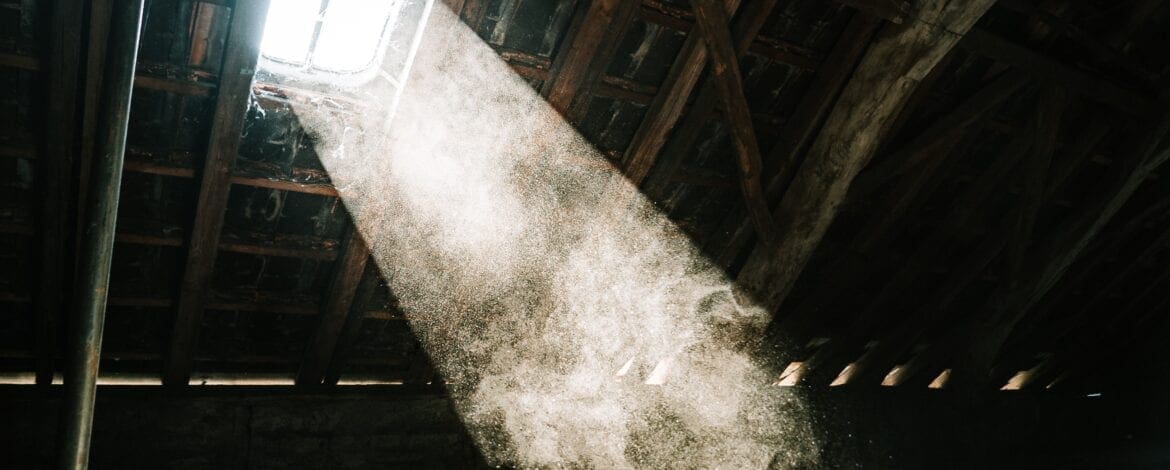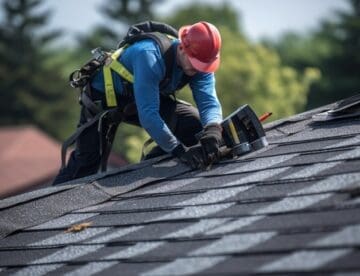The attic is the perfect household area for mold growth. Homeowners living in hot and humid climates often have trouble with it. As homeowners rarely go up in their attic, mold can spread freely. Most people usually notice this issue only after buying a new house or when selling their home. On this page, we’ll share with you some helpful tips on finding out whether or not you have mold in your attic and how to get rid of attic mold.
How to Recognize Mold in Your Attic
Check your attic once every six months or at least on an annual basis. That way, you’ll find the mold early and deal with it before it becomes serious. If you suspect you have mold in your attic, here are some telltale signs:
- Your Attic Feels Stuffy — When an attic is adequately ventilated, the air should be pleasant and not excessively hot. A stuffy attic that’s hard to breathe in indicates poor ventilation, which is the leading cause of mold growth.
- The Attic Smells Like Mildew — If your attic smells musty or stale, you have a moisture problem.
- Black Stains on Attic Wood — If you find any black discoloration on the wood surfaces in your attic, you might have a serious black mold problem.
- Wet Insulation — This is a sign that your attic will soon develop a mold problem. Furthermore, damp insulation in the attic also presents an issue on its own since it loses many insulating properties and characteristics.
- Water and condensation around fans, lights, or smoke alarms — If you notice any of these issues, you don’t even have to go up to your attic to check. You can be sure that it’s suffering from excessive moisture.
What Causes Mold?
Roof leaks, condensation, ambient humidity, and excess moisture are the root causes of all mold problems. These common issues can lead to mold growth in your attic:
- Improper ventilation — Most attics are designed to provide a passive ventilation system. Outside air comes in through the vents at the bottom and goes out through the top vents. If any of the vents are blocked, the air can’t circulate properly. The result? Air stagnation, condensation, and, subsequently, mold growth throughout the entire attic.
- Roof Leaks — Unlike the previous cause, roof leaks often lead to localized areas of attic mold near the places where your roof is leaking. If you find any dark or discolored stains of attic joists or rafters, it’s highly likely that your roof is leaking and feeding the mold spores.
- Insufficient or inadequate bathroom and kitchen vents — Your bathroom and kitchen are rooms that generate the most moisture in your household. That’s why you must have fans powerful enough to suck out all of the moisture from these rooms. Be sure that the moisture from these rooms is being pumped outside of your home. Fans that draw out the moisture directly into the attic are a surefire way to end up with moldy attic.
Is Attic Mold Dangerous?
There are many types of mold — some toxic and some not. That said, the mold might not be a health risk if it doesn’t move into other areas and is contained in the attic. And, because warm air rises, mold spores that are confined to the attic is less likely to spread to other parts of your home.
But, regardless if the type of mold is toxic or not, there’s no reason you should leave it there. Even non-toxic mold can cause health problems, most notably allergies and respiratory illnesses. So, while you shouldn’t freak out immediately after you notice mold, it’s best to address this issue promptly.
How to Get Rid of Mold in the Attic
As a homeowner, you’re probably inclined to deal with this issue on your own. However, we advise you to refrain from a DIY project of this stripe. If you’ve never done such mold-remediation work, there’s a good chance you won’t do it properly on your first try and will waste time and money.
Getting rid of attic mold on your own can be difficult, not to mention dangerous. You can experience respiration and breathing problems. Or injure yourself by falling through the floor joists if they’ve deteriorated due to moisture exposure.
On the other hand, some homeowners might be okay with attic mold, as they don’t consider their attic a livable space of their home. We would also advise against such thinking. Moisture and mildew can spread throughout the other parts of your household and even threaten your house’s structural integrity.
Contact a Professional Contractor for Mold Clean-up
It’s not advisable to take this problem lightly and not address it as soon as you notice it. The best way to get rid of attic mold is to contact a professional and experienced mold remediation company. They’ll know how to eliminate the mold and address any moisture and water leaks feeding it.
Fortunately, getting rid of attic mold doesn’t usually call for extensive construction work. But if your roof’s integrity is the leading cause of the attic mold problem, it’s best to have the roof assessed and replaced if necessary.
Your roof’s poor condition and general wear and tear can significantly contribute to the spread of mold in your attic. Make sure to pick the right contractor and protect your home to keep your family is safe and healthy.
Attic mold is a common issue for many homeowners, but it doesn’t have to affect your household. Call us today at 813-373-9088. Or fill out our online form, and we’ll get back to you asap.




